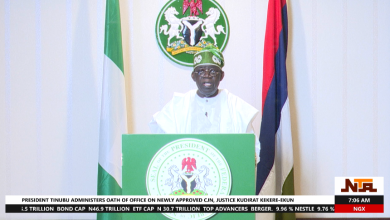BREAKING: Labour Vows To Reject Addition Of Small Amount By FG

The Organised Labour, comprising the Trade Union Congress (TUC) and the Nigeria Labour Congress (NLC), has firmly rejected any slight increase to the current ₦60,000 offer proposed by the tripartite committee.
This stance was articulated by TUC President Festus Osifo during an appearance on Channels Television’s “Politics Today” program on Tuesday evening.
This announcement comes shortly after Organised Labour decided to suspend its nationwide strike, which had started at 12:01 am on Monday, causing significant disruptions across various economic sectors.
The strike was initiated due to the unions’ dissatisfaction with the government’s handling of wage negotiations.
During the interview, Osifo stressed that while the strike had been paused to enable further negotiations, the labour unions would not accept a token increase.
“Our decision to suspend the strike was made in good faith to allow for more constructive dialogue. However, any minor addition to the ₦60,000 initially proposed will not be acceptable to us,” Osifo stated.
Exposed!! Popular Abuja doctor revealed how men can naturally and permanently cure poor erection, quick ejaculation, small and shameful manhood without side effects. Even if you are hypertensive or diabetic . Stop the use of hard drugs for sex!! It kills!
The ongoing negotiations aim to establish a new minimum wage that reflects the current economic realities faced by Nigerian workers.
“At the meeting on Friday, the tripartite committee stated they would not add anything more to the ₦60,000, but in the meeting yesterday (Monday), Mr. President committed to doing more than ₦60,000,” Osifo said.
When asked if Labour would accept a small increase to the last offer from the tripartite committee, which includes the Federal Government, states, and the Organised Private Sector, the TUC president responded, “No. We made it clear that we won’t accept minor additions like ₦1, ₦2, or ₦3000 as they were suggesting. We have received some good assurances that they will offer something substantial.”
Osifo emphasized that Organised Labour is not insisting on ₦494,000 as the new minimum wage but expects the tripartite committee to show seriousness and offer a wage that is economically realistic and aligned with current inflationary pressures.




